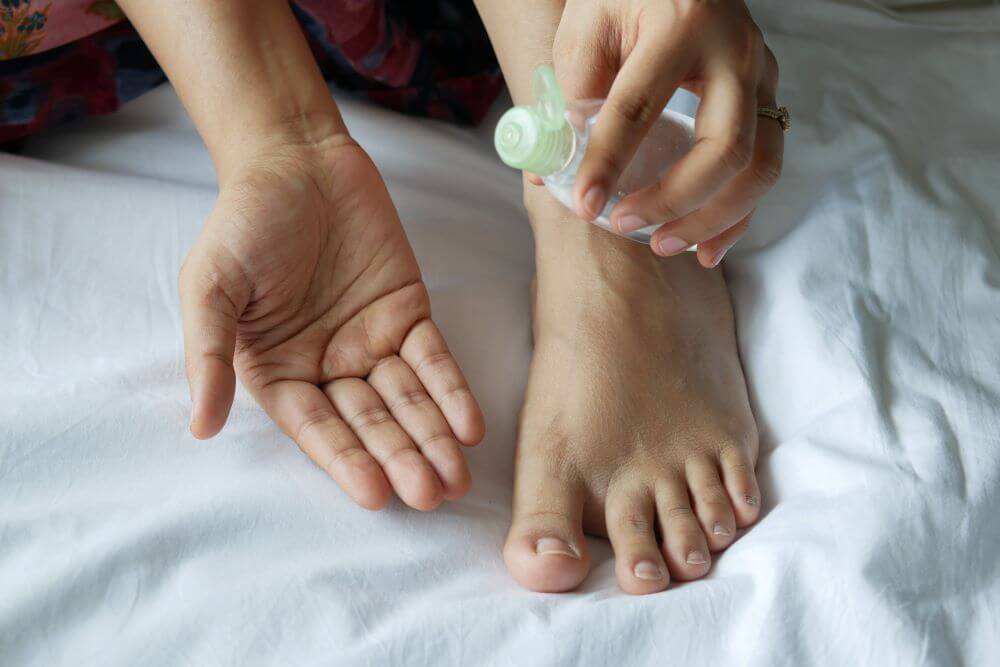Early Fungus Growth Often Goes Unnoticed
Unless you wear a lot of sandals or flip-flops, you may not pay much attention to your toenails. But, you should keep an eye on your toenails no matter what kind of shoes you wear. Onychomycosis or toenail fungus is hard to clear up once it sets in. With time, it can even completely destroy the nail. If you get it, it won’t go away without treatment. Often repeat treatments or more than one kind of treatment is needed to fully eliminate the fungus. Toenail fungus is also not usually painful, so many people develop it without even knowing.

The Different Toenail Fungus Treatments
Treatment for Superficial Infections
With superficial onychomycosis, you may notice small, white patches on your nails. Because this is just the beginning of the infection, you may be able to file off the patches and apply a topical, OTC antifungal medication. However, if the fungus has penetrated the nail and gone deep into the nail bed, an OTC antifungal won’t do the trick. It only treats the surface area, so the fungus won’t be rooted out. These surface fungal infections are painless, so they often go unnoticed until they develop into full-blown infections.
Treatment for Deep Infections
Deeper toenail fungal infections often discolor and thicken the nails. With time, the infection can become painful. If your fungal infection is this severe, you should consult a podiatrist. The doctor will prescribe a multiple-step treatment which may include:- Debridement - This is the in-office removal of the thickened parts of the nail. Debridement allows topical creams to penetrate to the root of the fungus.
- Topical creams - You can get antifungal creams over the counter as or as a prescription. It’s important to follow the usage instructions for the cream to be effective. Regretfully, topical treatment alone doesn’t usually cure deep fungal infections. Because of this, your doctor may prescribe both topical and oral medications.
- Oral medication - If you’re prescribed oral medication, you will need to take it for at least three months. Oral meds have a high success rate for curing fungal infections, but you’ll have to get routine blood work to be sure the medication is not damaging your liver.
- Laser treatments - Podiatrists sometimes use laser treatment in tandem with oral and topical medications. Lasers can help heal fungal infections faster, but cannot cure them alone. For truly stubborn infections though, it can boost the overall success of treatment.
- Surgery - In the most severe cases, the toenail may be too far gone to save so your doctor can either remove it via surgery or dissolve it with acid. The whole nail may be removed or just a portion of the nail. If some of the toenail is left, the nail should grow back in if all of the fungi was properly removed. If your entire nail is removed, artificial nails can protect the sensitive area until your nail starts to grow back.
There are several home remedies for toenail fungus, as well. None of them have been proven effective though, so use with caution. Tea tree oil is one home remedy. In ancient times, Egyptians even used crocodile dung as a toenail fungus treatment.

Good Hygiene is the Best Prevention
As you can see by the lengthy treatments and the difficulty in curing it, your best bet is to prevent toenail fungus from growing in the first place. Keep your feet clean and dry. Wash daily and immediately change out of wet or damp socks. If you get pedicures at nail salons, be sure the salon is sanitizing equipment between uses. Watch for signs of nail thickening, discoloration, or white patches.
Many elderly people mistakenly assume nail thickening is just a part of aging. While it can be, it also is a sign of toenail fungus. Should you notice any of these changes, see your doctor. It’s much easier to cure a fungal infection that’s just getting started instead of one that’s been going on for some time. If you keep your feet in good shape, your chances of having to deal with toenail fungus are slim.

